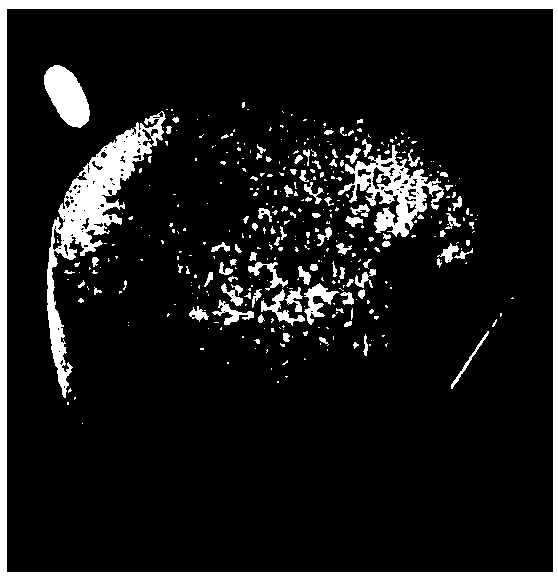Active NS-GAM gene scaffold for treating scalds and preparation method thereof
A NS-GAM, gene activity technology, applied in pharmaceutical formulations, pharmaceutical science, capsule delivery, etc., can solve problems such as wound infection and difficult to heal, and achieve the effect of alleviating inflammatory response, promoting wound repair, and ideal and benign recovery.
- Summary
- Abstract
- Description
- Claims
- Application Information
AI Technical Summary
Problems solved by technology
Method used
Image
Examples
Embodiment 1
[0040] Dissolve NCMC in sterile double-distilled water, stir and dissolve at room temperature, and prepare a solution with a concentration of 3% (w / v). In the same way, a SA solution with a concentration of 3% (w / v) was prepared. The NCMC solution and the SA solution were mixed evenly at a volume ratio of 7:3, and the bubbles in the solution were removed by ultrasonic treatment. Pour the processed mixture carefully into a plate with a diameter of 3 cm, and freeze-dry to obtain a dry solid support. The scaffold was placed in 1% CaCl 2 Carry out the cross-linking reaction in the solution for 12 hours. After the reaction, wash with sterile water several times to remove excess CaCl adsorbed on the scaffold material. 2 solution. Freeze-drying is performed again to obtain a cross-linked and stable NCMC / SA composite scaffold.
[0041] The NCMC / SA support prepared by embodiment 1 is a flat cylinder (such as figure 1 shown), the color is white, the diameter is about 24mm, and the ...
Embodiment 2
[0043] The extract from the NCMC / SA scaffold prepared in Example 1 was prepared according to the national standard ISO 10993-5. Take NIH3T3 cells in the logarithmic growth phase and adjust the density to 4×10 4 cells / ml, inoculated into 96-well plate, at 37℃, 5%CO 2 Incubate for 24 hours under the condition. The original culture medium was discarded, and the culture medium containing the extracts of NCMC / SA scaffolds with different dilutions were added respectively, and the concentrations of the original extracts contained therein were 100%, 50% and 25%, respectively. After culturing for 24 and 48 hours, the cell safety of the scaffold was detected by the MTT method, and the results were as follows: Figure 4 As shown, within the concentration range of each extract, the relative proliferation rate of cells in each group was above 95%, indicating that the NCMC / SA scaffold has no cytotoxicity and has good cytocompatibility. There was no significant difference among different ...
Embodiment 3
[0045] Take NIH3T3 cells in the logarithmic growth phase and adjust the density to 4×10 4 , inoculated onto NCMC / SA scaffolds at 37°C, 5% CO 2Under the conditions, they were cultured with DMEM conventional medium for 24h and 48h respectively. Absorb the culture medium from some samples, centrifuge at 1000rpm for 5 minutes, take the supernatant, and use the lactate dehydrogenase (LDH) kit to measure the activity of lactate dehydrogenase (the specific method is operated according to the instruction manual), the results are as follows Figure 5 shown. At 24h and 48h, compared with the control group, the relative proliferation rates of the cells grown in the scaffold were 94.7% and 100.8%, respectively, indicating that the NCMC / SA scaffold is very helpful for the attachment and growth of cells, which may be related to the NCMC components. Previous studies have shown that NCMC can promote the growth of fibroblasts. The NCMC / SA scaffolds grown with NIH3T3 cells were dehydrated, d...
PUM
| Property | Measurement | Unit |
|---|---|---|
| size | aaaaa | aaaaa |
| diameter | aaaaa | aaaaa |
| height | aaaaa | aaaaa |
Abstract
Description
Claims
Application Information
 Login to View More
Login to View More - R&D
- Intellectual Property
- Life Sciences
- Materials
- Tech Scout
- Unparalleled Data Quality
- Higher Quality Content
- 60% Fewer Hallucinations
Browse by: Latest US Patents, China's latest patents, Technical Efficacy Thesaurus, Application Domain, Technology Topic, Popular Technical Reports.
© 2025 PatSnap. All rights reserved.Legal|Privacy policy|Modern Slavery Act Transparency Statement|Sitemap|About US| Contact US: help@patsnap.com



